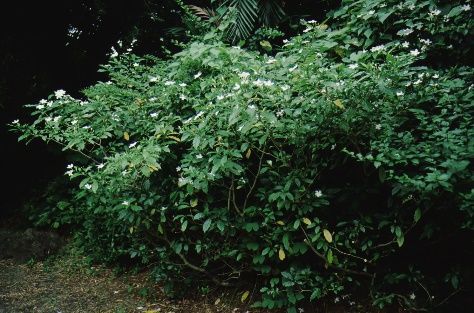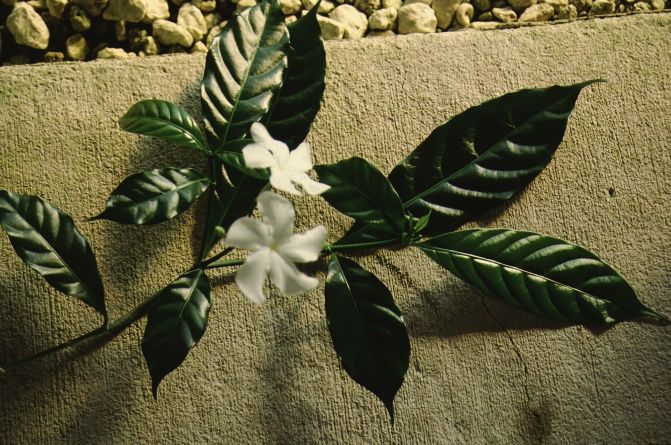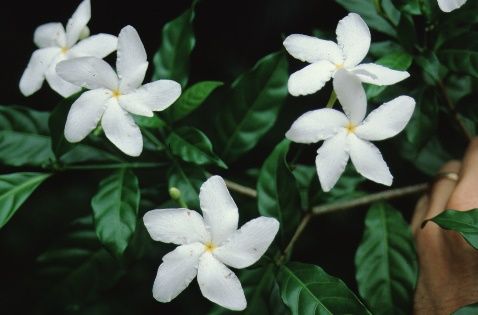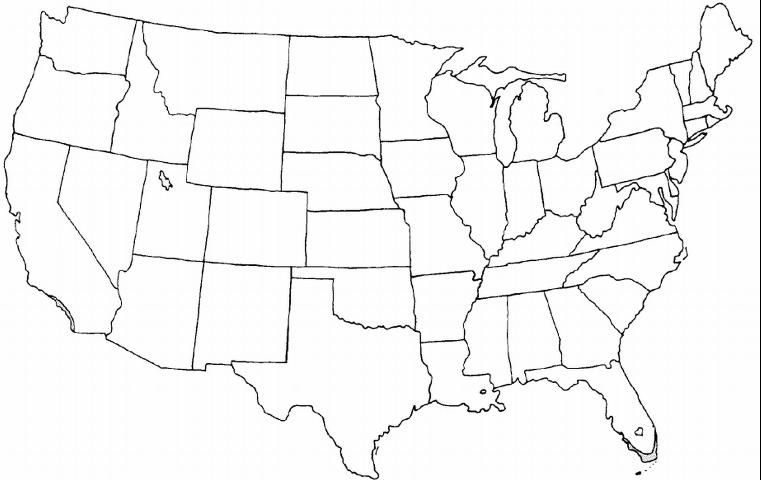Introduction
This round, evergreen, well-branched shrub has large, glossy, dark green leaves and waxy white, ruffle-edged flowers, which are especially fragrant at night. Flower petals curve like a pinwheel, and they are very prominent throughout the warm months of the year. Stems bleed a milky sap when injured.

Credit: Edward F. Gilman, UF/IFAS

Credit: Edward F. Gilman, UF/IFAS

Credit: Edward F. Gilman, UF/IFAS
General Information
Scientific name: Tabernaemontana divaricata
Pronunciation: tab-ber-nee-mon-TAY-nuh dye-vair-rick-KAY-tuh
Common name(s): crepe jasmine, pinwheel flower, cape jasmine
Family: Apocynaceae
Plant type: shrub
USDA hardiness zones: 10B through 11 (Figure 4)
Planting month for zone 10 and 11: year-round
Origin: native to temperate and tropical Asia
Invasive potential: not considered a problem species at this time and may be recommended by UF/IFAS faculty (reassess in 10 years)
Uses: mass planting; specimen; container or above-ground planter; hedge; foundation; trained as a standard
Availability: generally available in many areas within its hardiness range

Credit:
Description
Height: 6 to 10 feet
Spread: 3 to 6 feet
Plant habit: round
Plant density: moderate
Growth rate: moderate
Texture: medium
Foliage
Leaf arrangement: opposite/subopposite
Leaf type: simple
Leaf margin: entire
Leaf shape: oblong
Leaf venation: pinnate
Leaf type and persistence: evergreen
Leaf blade length: 4 to 8 inches
Leaf color: green
Fall color: no fall color change
Fall characteristic: not showy
Flower
Flower color: white
Flower characteristic: pleasant fragrance; year-round flowering
Fruit
Fruit shape: pod or pod-like
Fruit length: 1 to 3 inches
Fruit cover: dry or hard
Fruit color: unknown
Fruit characteristic: inconspicuous and not showy
Trunk and Branches
Trunk/bark/branches: not particularly showy; typically multi-trunked or clumping stems
Current year stem/twig color: green
Current year stem/twig thickness: medium
Culture
Light requirement: plant grows in part shade/part sun
Soil tolerances: alkaline; clay; sand; acidic; loam
Drought tolerance: moderate
Soil salt tolerances: unknown
Plant spacing: 36 to 60 inches
Other
Roots: usually not a problem
Winter interest: plant has winter interest due to unusual form, nice persistent fruits, showy winter trunk, or winter flowers
Outstanding plant: plant has outstanding ornamental features and could be planted more
Pest resistance: long-term health usually not affected by pests
Use and Management
Crepe jasmine is a good choice for use in a shrubbery border or as a specimen planting. Its rounded form makes it a good foundation plant. The glossy foliage makes it nicely suited for any prominent position in the landscape.
Crepe jasmine grows well in full sun or partial shade (plants look better in partial shade) on any moist but well-drained soil, requiring less water once established. Plant on 4- to 5-foot centers to form a mass planting. The plant is best suited for acid soil, but regular fertilizing can help prevent chlorosis on slightly alkaline soil. It requires frequent fertilization in highly alkaline soils.
Propagation is by cuttings.
Pests and Diseases
Pest problems include scales, sooty-mold, mites, and nematodes.
No diseases are of major concern.